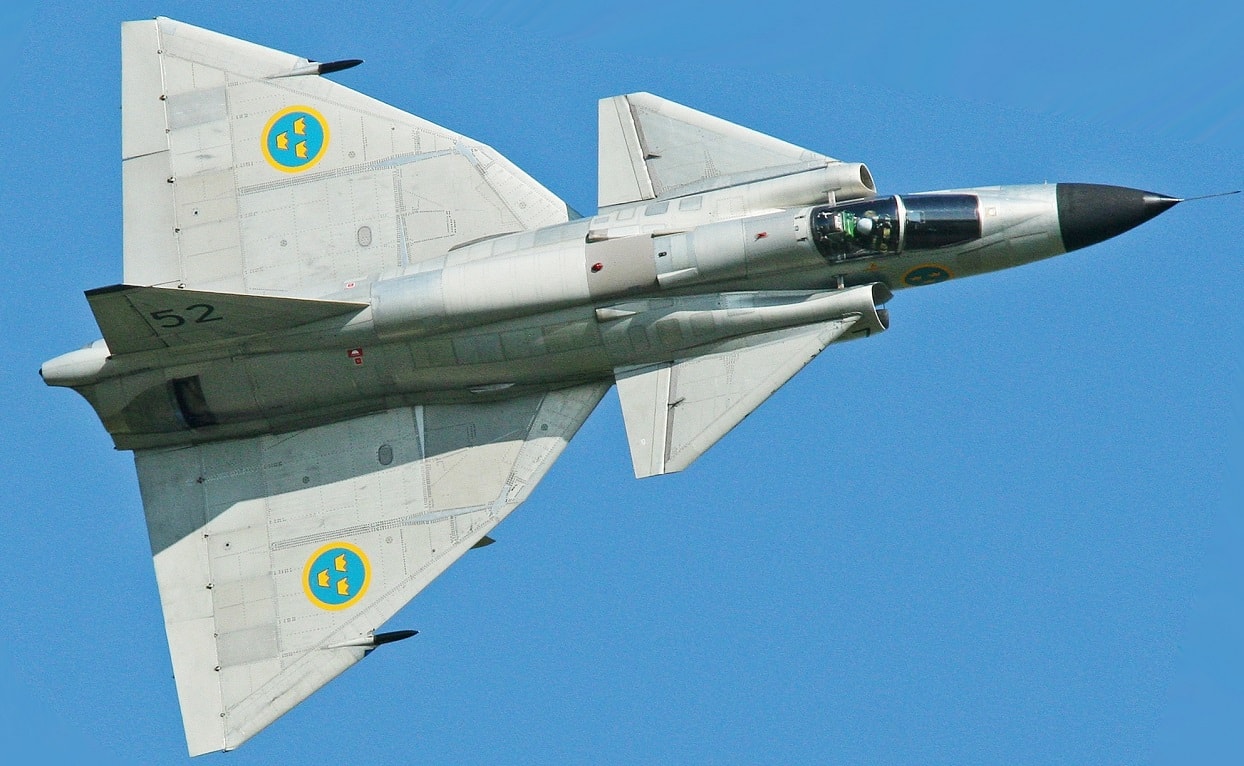Saab, which is best known in America for distinct automotive designs, is also responsible for distinct aircraft designs. One of Saab’s most distinctive aircraft was the S37 Viggen – a jet whose name, “Viggen,” had two meanings. The first meaning of Viggen, is derived from “askvigg,” which can be translated roughly to “thunderbolt,” but traditionally meant “thunderstones.” Thunderstones – askvigg – is what the Vikings called the stone axes they excavated – they were prehistoric, from peoples who inhabited Scandinavia long before the Vikings. The Vikings developed a legend for the stone axes, believing that Thor, their thunder god, had delivered the axes in lightning strikes that occurred while he was stalking giants with Mjolnir, Thor’s war hammer. The Vikings believed that the thunderstones had magical characteristics, including protection from lightning. So, the first meaning of the name Viggen is pretty fantastic for a fighter jet. The second name, which refers to “vigg,” is the Swedish word for tufted duck.
The inception of the S37 Viggen was in 1961, under the name Aircraft System 37. Back then, the Viggen program was the largest industrial project Sweden had ever committed to. Concerns over Russia, which were acute during the Cold War, prompted Sweden to commit so many resources to the project. Remarkably, through the 1960s, Aircraft System 37 consumed ten percent of Sweden’s research and development budget; it was like their Apollo program as far as state funds are concerned. Sweden is responsible for creating most of the jet’s systems – everything from the powerplant to the ejector seat, reconnaissance systems, the armaments, ground servicing equipment, even the simulators that pilots used to prepare for flying the actual jet. This was all a significant undertaking for a country like Sweden.
In 1963, Saab had committed to a basic concept for Aircraft System 37. Like the automobiles that would later appear on the US market, the Aircraft System 37 design was a little quirky, a little different; the design incorporated aft-mounted double delta wings and small, high-set canards. The canards in particular were noteworthy – before the S37 Viggen, no aircraft featuring canards had ever been mass-produced; the Viggen would become the first. Since the Viggen, canards have become a pretty routine feature of aircraft design. The Dassault Rafale, IAI Kfir, Eurofighter Typhoon, and JAS 39 Gripen – which is Saab’s newest jet – all feature canards.
The Viggen’s quirky design wasn’t just happenstance – there were reasons for everything. The canards plus the delta wings were incorporated to satisfy actual program requirements – many of which were conflicting – that the Sweden government was demanding of the program. For example, the Viggen needed to be able to perform short take-offs and landings (STOL) – which would enable the Viggen to participate in Sweden’s clever Bas 60 dispersal system. Bas 60 was essentially the repurposing of public roadways as military airfields during wartime. Also, the Sweden government required that the jet be able to surpass the sound barrier – and also achieve high maneuverability (with low turbulence sensitivity) at subsonic and low-altitude flight.
The design was meant for an attack aircraft – not an interceptor; Sweden already had an interceptor: the Saab 35 Draken. The Saab S37 Viggen, on the other hand, was created to consume less fuel in the high subsonic range that attack aircraft often operate. To such an end, the Viggen was built around a licensed version of the Pratt & Whitney JT8D engine, Volvo-built, and known as the RM8. The original JT8D was built for airlines but the Volvo RM8 was heavily modified, allowing for operation at Mach 2 speeds.
Accordingly, the RM8 featured an afterburner (with a variable nozzle). The commercial airline variant did not come with an afterburner. The Viggen also featured a clever thrust reverse system that would help the aircraft slow down on landings (assisting with the short field requirements). The thrust reverse could also be pre-set, while the jet was still airborne, to initiate in the moment that the nose-wheel street compressed during landing.
In service, through the 1970s and 80s, the jet would prove reliable and safe. The jet could also perform – achieving 1, 386 miles per hour, a 40,000 foot per minute rate of climb and a 59,000 foot service ceiling. But while the S37 Viggen proved to be a competent jet fighter, it never saw much action; fortunately, Swedish jets never do. The Viggen was removed from frontline service in 1994 to make way for Saab’s newest – and still serving – jet, the JAS-39 Gripen.
Bonus: S37 Photo Essay

Saab S37. Image Credit: Creative Commons.
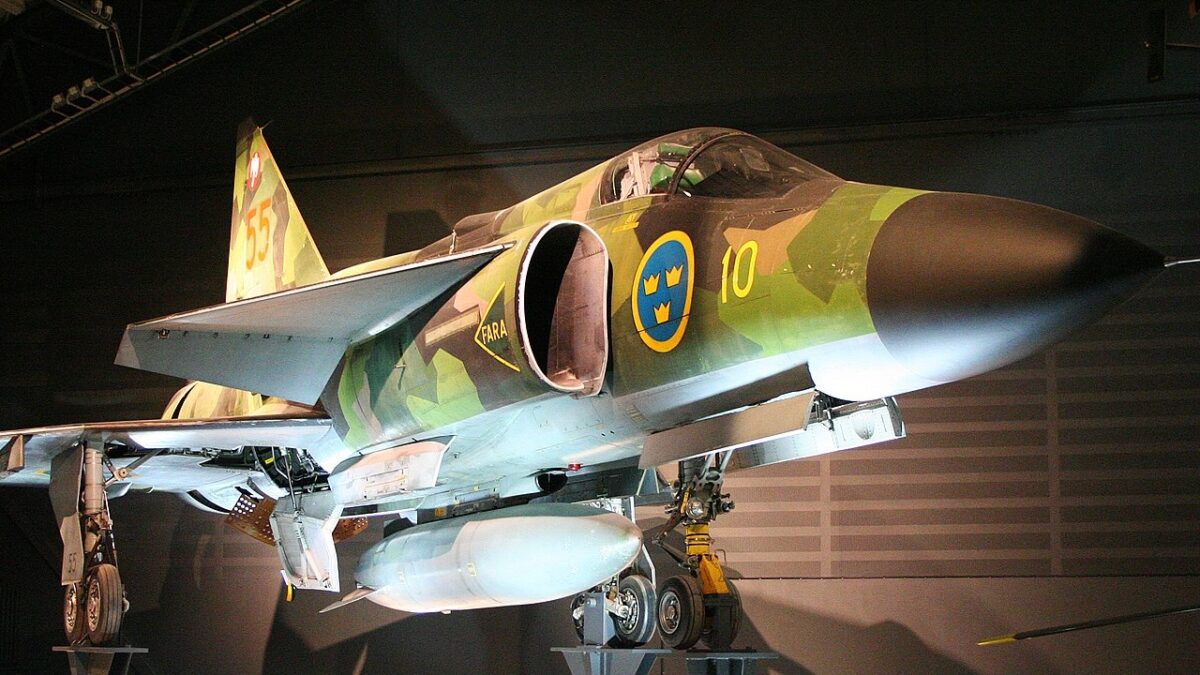
Saab S37. Image Credit: Creative Commons.
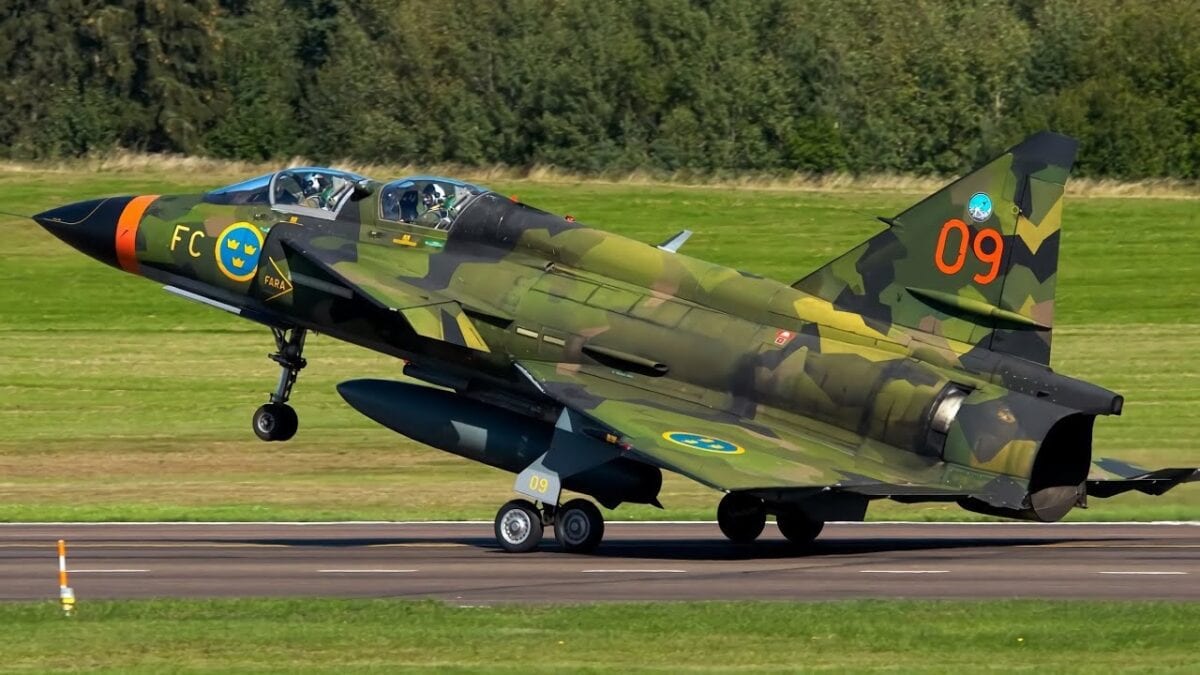
Image of Saab S37 fighter. Image Credit: Creative Commons.
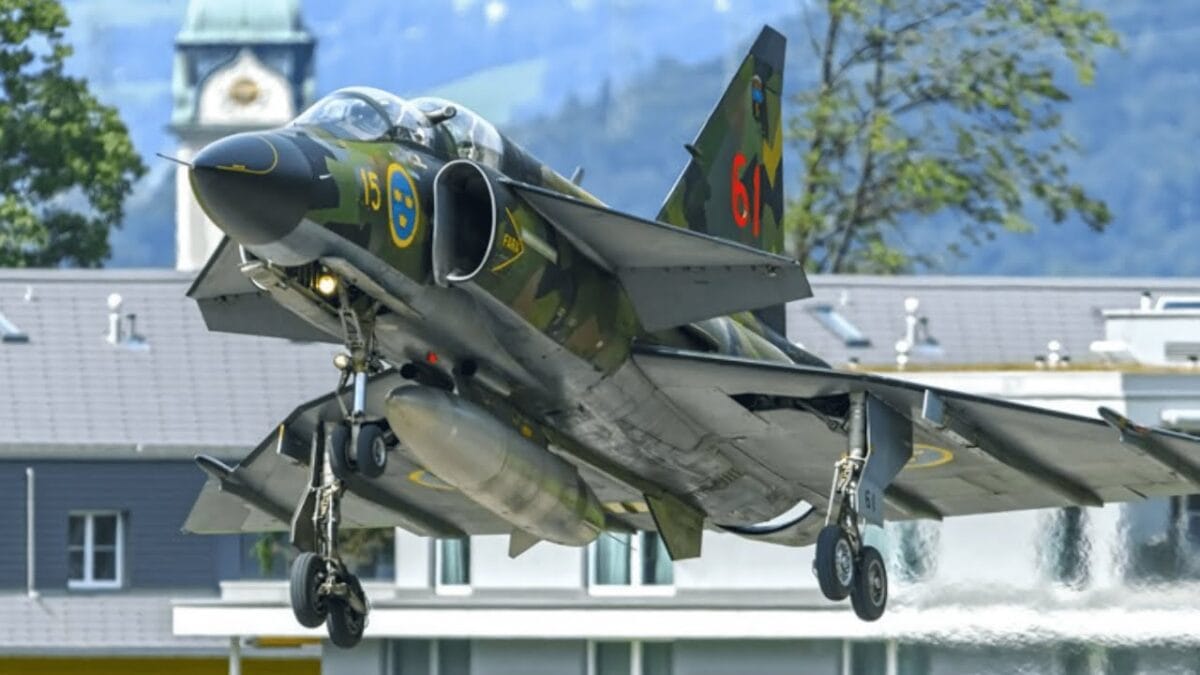
S37 Viggen. Image Credit: Creative Commons.
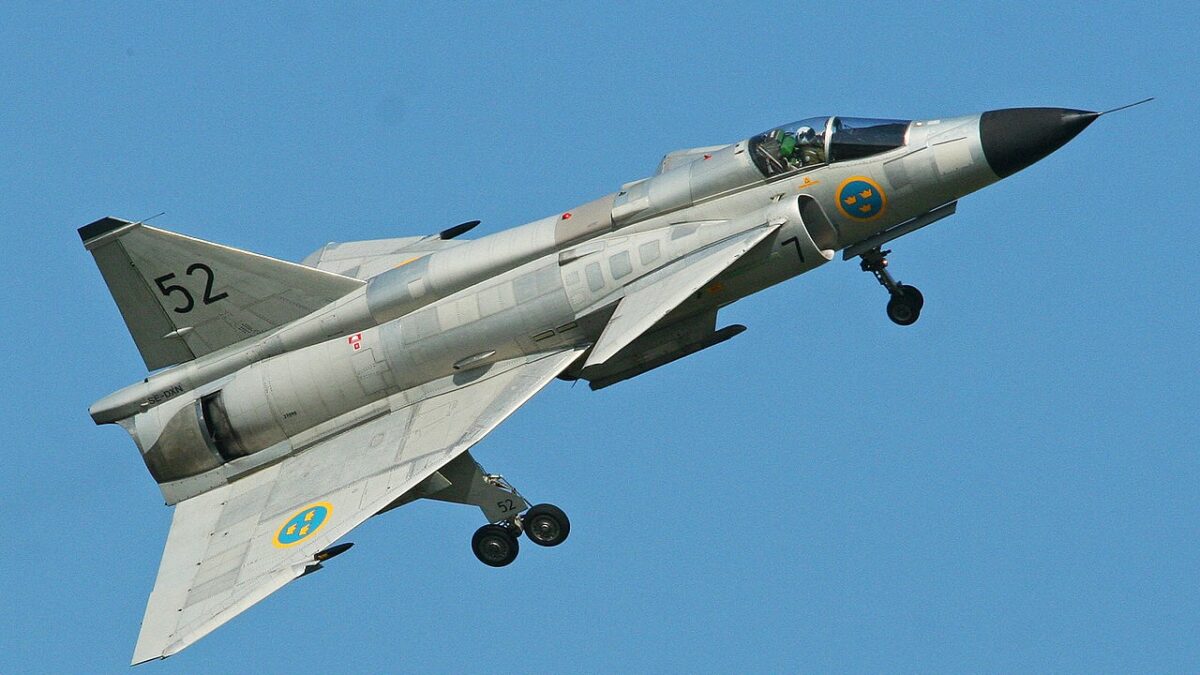
Making its first UK Airshow appearance, this amazing Viggen is operated by the Swedish AF Heritage Flight in genuine F7 markings. Seen during its solo routine. c/n 37-098. 2013 Waddington Airshow. 6-7-2013
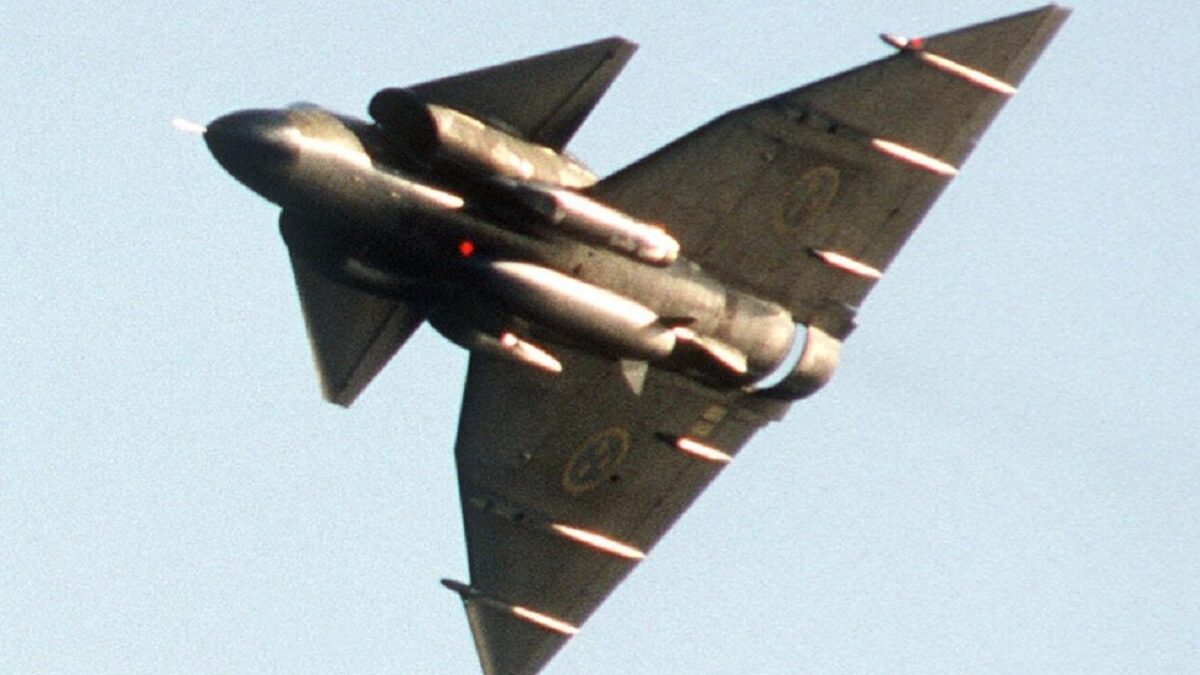
An underside view of a Swedish Saab 37 Viggen fighter aircraft during Exercise BALTOPS ’85.
Harrison Kass is the Senior Defense Editor at 19FortyFive. An attorney, pilot, guitarist, and minor pro hockey player, he joined the US Air Force as a Pilot Trainee but was medically discharged. Harrison holds a BA from Lake Forest College, a JD from the University of Oregon, and an MA from New York University. He lives in Oregon and listens to Dokken. Follow him on Twitter @harrison_kass.

